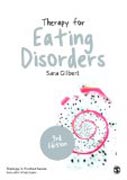
Affecting millions of people every year with devastating consequences, Anorexia, Bulimia and Binge Eating disorders are becoming more and more prevalent in today's fast paced, high pressured society. Drawing on over 20 years experience as a practitioner, Sara Gilbert takes the reader through the complexities of working with eating disorders, drawing on practical, cognitive behavioural and educational approaches to theory, assessment, treatment and practice. Packed full of new resources for qualified professionals and trainees, this new edition includes: -A summary of new research on the causes of eating disorders, dual diagnosis and co-morbidity -New content on the best treatment for eating disorders and preparing clients for treatment -An updated chapter examining the effects of nutrition on physical and psychological wellbeing -New content on working with complexity and risk, An updated reference section Therapy for Eating Disorders, Third Edition, will prove an essential resource for practitioners in the mental health field, including psychotherapists, psychologists, counsellors, psychiatrists, mental health nurses, and dieticians. Sara Gilbert is a chartered clinical psychologist whose specialist interest in the field of eating disorders spans twenty years. She has worked for 12 years as a clinical lead in an eating disorder service in the NHS and is now in private practice. INDICE: Preface AcknowledgementsWhat is an eating disorder? A note about psychiatric diagnosis Eating Disorders in the twenty first century The relationship between weight and eating disorder Anorexia nervosa Bulimia nervosa Binge Eating Disorder Feeding and Eating disorders not elsewhere classified Other causes of weight loss or gain or unusual eating behaviours Causes of the Eating Disorders Psychobiological mechanisms Psychosomatic theories Looking for an explanation in the past Eating disorder and other psychiatric diagnoses: is there a genetic susceptibility? Anorexia and bulimia nervosa as sociocultural phenomena Eating disorder as learned behavior Eating disorder as a corollary to dieting and food deprivation ConclusionsTreatment for the Eating Disorders Psychodynamic therapies Family therapies The use of psychotropic medication Cognitive behaviour therapy An outline of the characteristics of CBT How effective is CBT for eating disorders? ConclusionsA Cognitive Behavioural and Integrative Approach to Eating Disorders The theoretical basis of a cognitive behaviour therapy approach to the eating disorders The structure of cognitive therapy for eating disorders The acceptability of cognitive therapy for eating disorders A broad interpretation of cognitive therapy for the eating disorders Conclusions Beginning the Therapy Process The initial stages Some questions to ask when assessing the person with an eating disorder The use of questionnaires in the assessment of eating disorder Is this the right time for therapy? ConclusionPreparing for change Presenting the cognitive behavioural view and formulating the problem Assessment of motivational stage in people with an eating disorder Self-monitoring by the client Setting the agenda for therapy A focus on emotions and coping strategies Psychoeducation Nutritional Aspects of Helping the Eating-Disordered Client Nutritional knowledge of eating-disordered clients Nutritional counselling The body's need for good nutrition Knowledge about energy balance and weight regulation Information about the specific effects of bingeing and purging Information about the effects of food and eating on metabolism Establishing a normal eating pattern with obese binge eaters: to diet or not? Establishing weight gain with anorexics Behavioural Techniques Self-monitoring Target setting Behavioural experiments Self-reward Scheduling pleasant events Behavioural techniques for controlling overeating (self-control) Taking exercise Practising 'normal' eating Exposure Assertiveness around food Relaxation and stress management Conclusion Cognitive Techniques Identifying negative thoughts Answering negative thoughts Homework Identifying and dealing with dysfunctional assumptions and core beliefs Modifying assumptions and core beliefs Exploring the meaning of eating disorder symptoms Getting 'stuck' Conclusion Adapting to Different Situations and Dealing with Endings Working with severe and complex cases The end of the therapy relationship Preventing relapse Involving family members in the therapy process Working with groups Working in parallel with other treatments Conclusion Conclusion Appendix 1: Some useful web pages Appendix 2: Eating Problems: Resources for Clients Appendix 3: Eating Disorders and their Effects Appendix 4: Guidelines for Normal Healthy Eating Appendix 5: The Effects of Strict Dieting and Starvation and of Giving Them Up Appendix 6: Medical and Physical Problems Caused by the Symptoms of Eating Disorders Appendix 7: Controlling What You Eat Appendix 8: Giving Up Vomiting as a Way to Control Your Weight or Deal with Stress Appendix 9: Learning to be Assertive about What You Eat: A Bill of Rights References Index
- ISBN: 978-1-4462-4095-3
- Editorial: SAGE Publications Ltd
- Encuadernacion: Rústica
- Páginas: 264
- Fecha Publicación: 16/12/2013
- Nº Volúmenes: 1
- Idioma:
